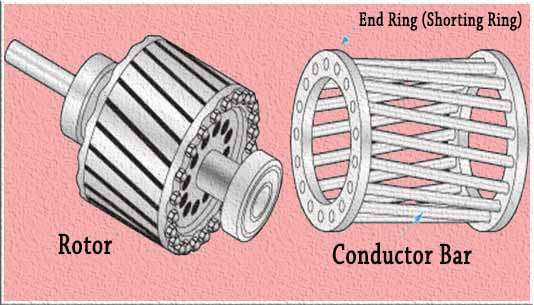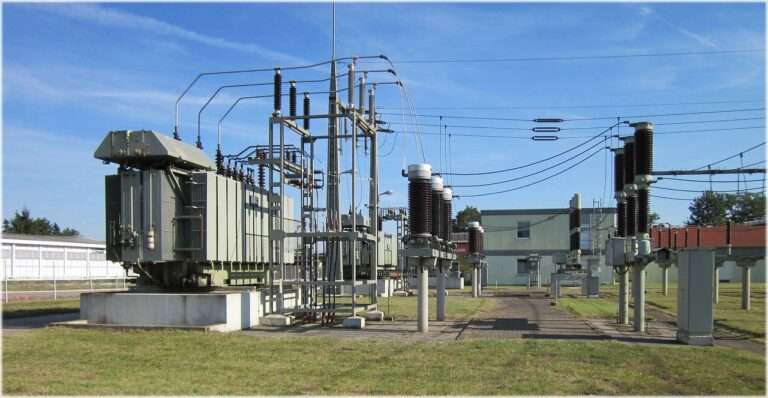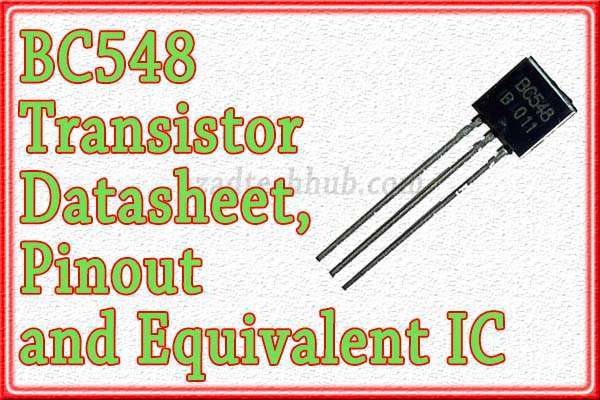LM2577: A Comprehensive Guide
The LM2577 is more than just a tiny chip in the world of electronics; it’s a key player in power management. This little marvel belongs to the family of voltage regulator integrated circuits, and it’s a master at boosting voltage levels efficiently. When you need to take a low input voltage and elevate it to a higher output voltage, the LM2577 steps in with its wizardry.
Beyond its tiny form, the LM 2577 holds immense power. It’s designed to handle different tasks, whether you’re looking to power a project or maintain steady voltage levels across varying conditions. This IC becomes your trusty companion, ensuring that your devices get the right voltage they need to function at their best.
The LM2577 doesn’t just boost voltages; it brings reliability, stability, and efficiency to the table. It’s a silent hero, quietly managing voltage levels in various applications, from portable gadgets to power supplies and battery chargers.

Table of Contents
lm2577 pinout
Here’s a brief breakdown of the LM2577 pinout:
- Pin 1 (V IN): This pin is used for the input voltage supply.
- Pin 2 (GND): Ground pin, providing a reference potential for the IC.
- Pin 3 (V OUT): Output pin, delivering the regulated output voltage.
- Pin 4 (Feedback): This pin helps set the output voltage level by providing feedback to the IC.
- Pin 5 (ON/OFF): Used to control the ON/OFF function of the IC.
Understanding the pinout configuration is crucial for correctly wiring and utilizing the LM2577 IC in your circuit or project.
Features of LM2577
The LM 2577 is a gem in the electronics world, boasting a handful of features that make it a beloved choice for engineers and tinkerers:
Voltage Boosting Master: This IC is a champ at taking low input voltages and boosting them up to higher, more practical levels. That makes it super versatile across a ton of different projects.
Steady and Efficient: No matter the changes in input voltage or load, the LM2577 keeps your output voltage steady and reliable. Its efficiency is top-notch, ensuring stable power output.
Adjustable Output Voltage: It’s like having a voltage dial! You can easily tweak the output voltage to suit your specific project needs. That kind of flexibility is a game-changer.
Energy-Saving Superpower: When it’s not actively boosting voltage, it’s not draining power. The LM 2577 has a low quiescent current, which means it’s perfect for gadgets running on batteries.
Built-in Safety Measures: Overheat protection is one of its cool features. It’s designed to stay cool even when things get demanding, keeping your circuits safe.
Compact and Mighty: Don’t let its small size fool you! This little guy packs a punch while being small enough to fit snugly into tight spaces.
Versatile Across the Board: Whether you’re charging batteries or juicing up various devices, the LM 2577 steps up to the plate in a wide range of electronic projects.
All in all, the LM 2577 is like that reliable friend who always has your back. With its set of features, it’s a go-to choice for anyone seeking efficient and stable voltage boosting in their electronic endeavors.

Technical Specifications of LM2577
Here’s a rundown of the technical specs for the LM 2577, that powerhouse of a voltage boosting IC:
Input Voltage Range: Typically around 3.5V to 40V, allowing it to work with a wide range of input sources.
Output Voltage Range: Adjustable, often set between 1.2V and 35V, offering versatility for various applications.
Output Current Capability: Depending on the version, it can handle currents ranging from 500mA to over 3A, providing sufficient power for diverse setups.
Efficiency: Offers high efficiency, commonly around 80-90%, ensuring minimal power loss during voltage conversion.
Switching Frequency: Usually operates between 50 kHz and 100 kHz, balancing efficiency with manageable circuitry.
Quiescent Current: Keeps it low, often less than 10mA, conserving energy when the circuit isn’t actively boosting voltage.
Operating Temperature Range: Typically spans from -40°C to 125°C, ensuring reliability across various environmental conditions.
Package Types: Available in different packages, commonly in TO-220 and TO-263, providing options for different setups and ease of use.
The LM2577 ticks all the technical boxes, making it a versatile and reliable component for voltage boosting applications. Its range of specifications allows for flexibility and stability across a broad spectrum of electronic projects.
Equivalents of LM2577
Here are some alternatives that match up to the LM2577 in voltage boosting and regulation:
LM2577S: An alternative variant of the LM 2577 with slightly different features but offering similar voltage regulation capabilities.
XL6009: Known for its high efficiency in boosting lower input voltages to higher output levels, a popular alternative to the LM2577.
LM2587: Similar in function but with subtle differences in specifications, often considered a close counterpart to the LM 2577.
MAX1771: This IC efficiently handles step-up voltage regulation, suitable for portable devices and battery-powered systems.
TPS40210: A high-performance boost controller, capable of precise voltage regulation and similar applications as the LM2577.
These alternatives present their own unique specifications and features, offering a range of options for voltage regulation and boosting needs. The choice among these depends on the specific requirements and nuances of your project or application.
lm2577 vs xl6009
Comparing the LM2577 and XL6009:
Functionality: Both are DC-DC converters, but the LM2577 is a step-up (boost) regulator, while the XL6009 can operate as a step-up or boost/buck-boost regulator.
Voltage Regulation: LM 2577 boosts input voltage to a higher output, whereas XL6009 can boost, reduce, or maintain voltage levels based on input.
Current Handling: LM 2577 has a fixed or adjustable output current, while XL6009 can handle higher output currents.
Efficiency: LM2577 offers decent efficiency but may vary with output current, while XL6009 provides high efficiency across various output voltages and currents.
Ease of Use: Both are user-friendly, but LM 2577 may require additional components for specific applications, whereas XL6009 has built-in features for easy use.
These differences impact their suitability for different projects. Depending on the requirements, one might prefer the LM2577 for simple step-up applications or opt for the XL6009 for its versatile step-up/down capabilities.
Applications of LM2577
The LM 2577 steps into the limelight across a variety of applications, harnessing its voltage-boosting prowess to power up various electronic setups. Here are some of its shining roles:
Battery Chargers: It’s a go-to for crafting battery charging circuits, efficiently stepping up lower voltages to match battery requirements.
Power Supplies: Whether for DIY projects or commercial setups, the LM2577 helps create stable and adjustable power sources.
Solar-Powered Systems: Perfect for solar-related setups where it elevates lower voltages from solar panels to usable levels.
Automotive Electronics: In the automotive world, it finds its place in voltage regulators, ensuring steady power delivery.
Portable Devices: Think power banks, portable chargers, and other portable gadgets that need efficient voltage boosts.
LED Drivers: It’s a star in driving LEDs by providing the necessary voltage to ensure their optimal performance.
Industrial Equipment: From machinery to instrumentation, the LM 2577 supports various industrial applications requiring voltage elevation.
This versatile IC flexes its muscles in powering up various electronics, ensuring stability, efficiency, and reliability across a diverse spectrum of applications.
In conclusion, the LM2577 emerges as a robust and reliable step-up voltage regulator, renowned for its efficiency and simplicity in boosting input voltages to desired higher levels. Its straightforward design makes it ideal for various applications requiring a steady and efficient power boost. Understanding its capabilities aids in harnessing its potential for enhancing voltage levels across different electrical circuits, ensuring stable and reliable power sources where needed.
Follow us on LinkedIn”Electrical Insights” to get the latest updates in Electrical Engineering. You can also Follow us on LinkedIn and Facebook to see our latest posts on Electrical Engineering Topics.
Worth Read Posts
- MT3608 IC
- What is a Variable Resistor?
- Lithium Ion Batteries
- CR2032 Battery
- Methods of Electrical Earthing
- Electrical Earthing Important Types
- Plant Factor, Plant Capacity Factor, and Load Factor
- Buck Converter Interview Questions
- DC DC Converter Interview Questions
- Transformer Electrical Interview
- Top 30 Op Amp Interview Questions
- Power Electronics Interview Questions
What is LM2577?
The LM 2577 is a step-up (boost) voltage regulator integrated circuit designed to efficiently increase input voltages to higher output levels.
What are the primary applications of LM2577?
It’s commonly used in applications where a stable higher voltage is required, such as in power supplies, battery chargers, LED drivers, and various portable devices.
What are the key features of the LM2577?
The LM2577 is known for its high efficiency, adjustable output voltage, and ability to handle varying input voltages while providing a stable output.
How does the LM2577 differ from other voltage regulators?
Unlike linear voltage regulators, the LM 2577 operates as a switching regulator, providing higher efficiency by converting excess voltage into useful output instead of dissipating it as heat.
What are the typical challenges faced when using LM2577?
Common issues include input voltage instability, incorrect circuit connections, and inadequate heat dissipation leading to overheating.
Can the LM2577 handle varying load conditions efficiently?
Yes, it can efficiently adapt to varying load conditions while maintaining a stable output voltage, making it suitable for dynamic applications.
What are some equivalent ICs to the LM2577?
Other ICs like the XL6009 and LM2587 serve similar functions and can be used as alternatives depending on specific project requirements.
What precautions should be taken while using the LM 2577?
Ensuring proper heat dissipation, observing the specified voltage and current limits, and correctly configuring the circuit are vital to prevent overheating and ensure optimal performance.
What are the benefits of using the LM2577 in battery-powered devices?
The LM 2577’s efficiency in stepping up lower battery voltages to higher levels makes it an ideal choice for extending battery life in portable devices.
How can one troubleshoot issues with the LM2577?
Troubleshooting involves verifying the connections, ensuring appropriate input voltage, and checking for any overheating or abnormal behavior in the output.





